Placenta love letter
Placentas are amazing.
Before I became a birth photographer, I hadn't given placentas much thought. I very quickly found myself in total awe of the placenta after my first few births. You create it out of nothing, it feeds and protects your baby while they're growing, and then you get rid of it! It's our only disposable organ, and according to new research it may have evolved from a virus!
And really, it's a beautiful organ. If blood and whatnot aren't your thing, I get that. But if you can take a moment to really look at a placenta, you can easily see why we in the birth world refer to it as the "Tree of Life". The intricate veins mirror the roots and branches of a tree, and each one that I've seen has been a little bit different.
The birth of the placenta is actually the third stage of labor; shortly after baby is born, the uterus contracts again to birth the placenta. I so often hear midwives reminding parents that there are no bones in the placenta, so it's usually easier than birthing the baby.
I really love watching the placenta tour, when the midwife or doctor shows the parents the organ that kept their baby safe for 10 months. The "baby side" with all of the beautiful veins and umbilical cord, and the "parent side" with the thick lobes that were attached to the uterus. And the amniotic sac, which always looks so small to me now that it's not stretched around its baby.
And a quick word about delayed cord clamping! While baby is still attached to a pulsing cord, they are still getting oxygen and blood from the placenta. So, even if they're a little stunned right after birth and don't start breathing with their lungs right away, a pulsing cord keeps them safe and buys some time for them to catch up to being on the outside.
Even after placenta has detached and been delivered, any of baby's blood that is still in the placenta continues to transfer back to baby. It's definitely worth reading up on the benefits of waiting to cut the cord, one very small one being the chance to get amazing photos like these. You can actually see when the blood has finished transferring; the cord is usually a rich, spirally, blue right at birth, and becomes white and straighter after it's empty.
More and more, I'm seeing parents ask to see their placenta. It's such a significant part of the birth, and deserves to get some love! Did you stop to look at your placenta after giving birth?
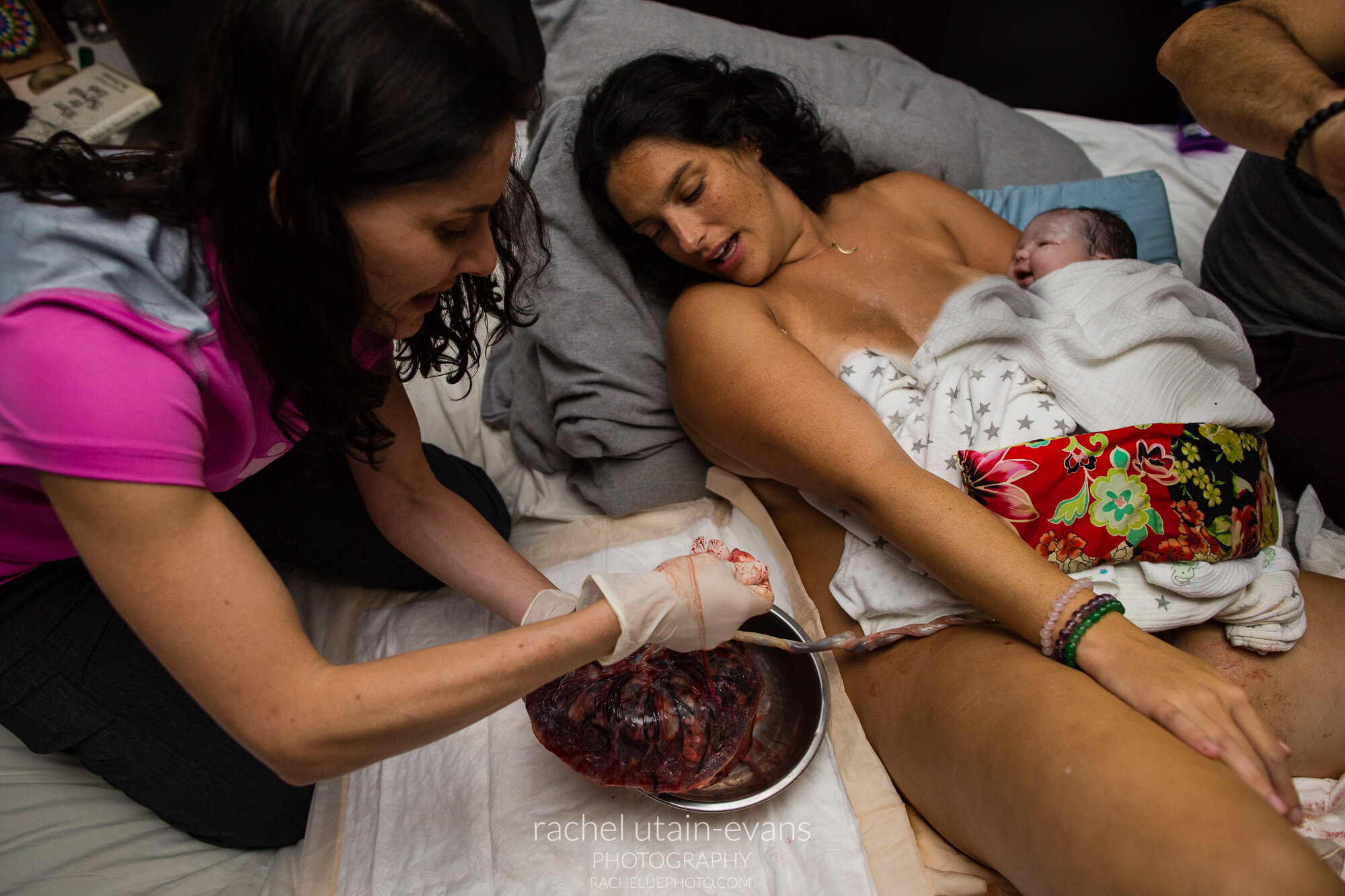

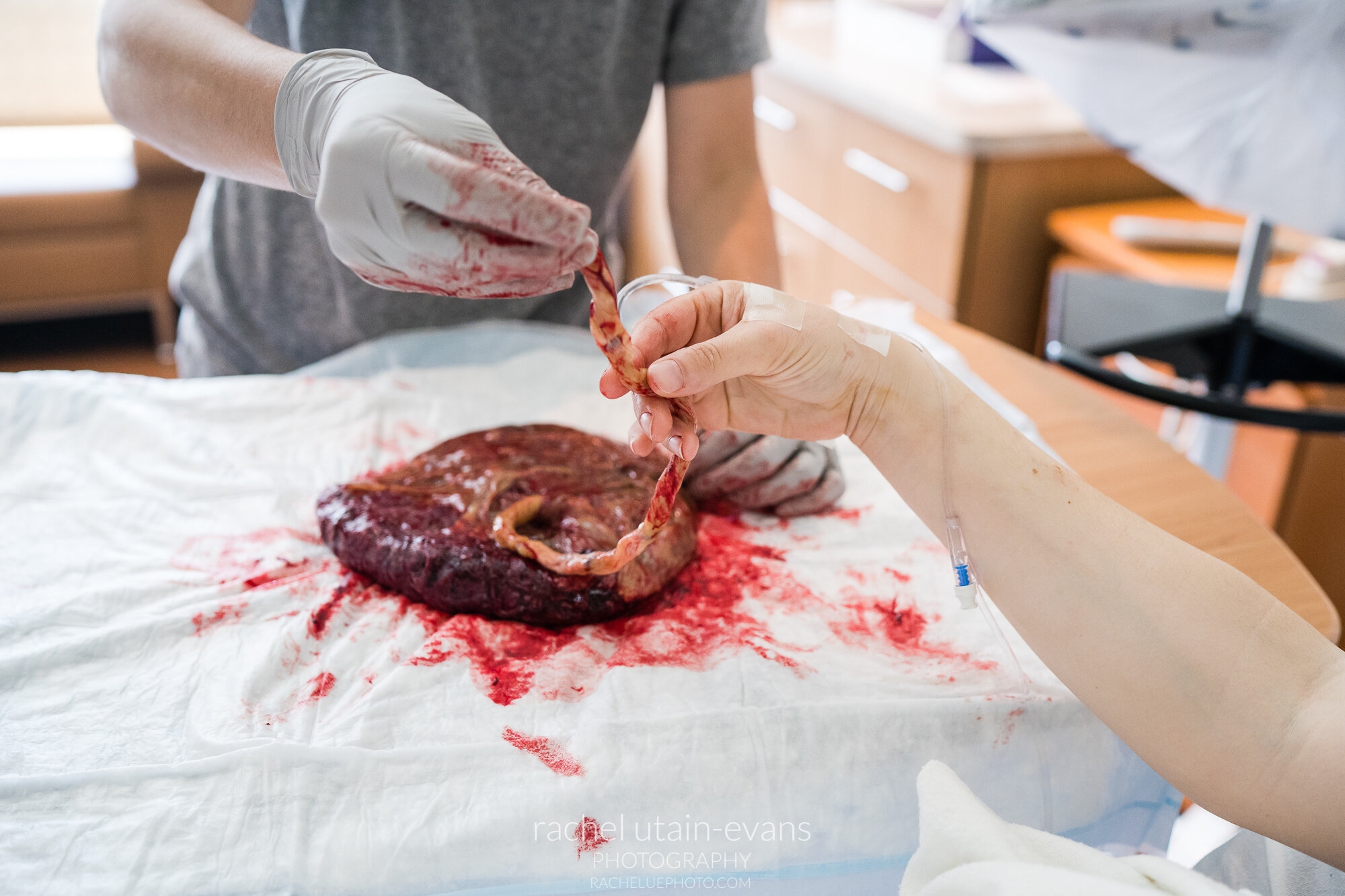
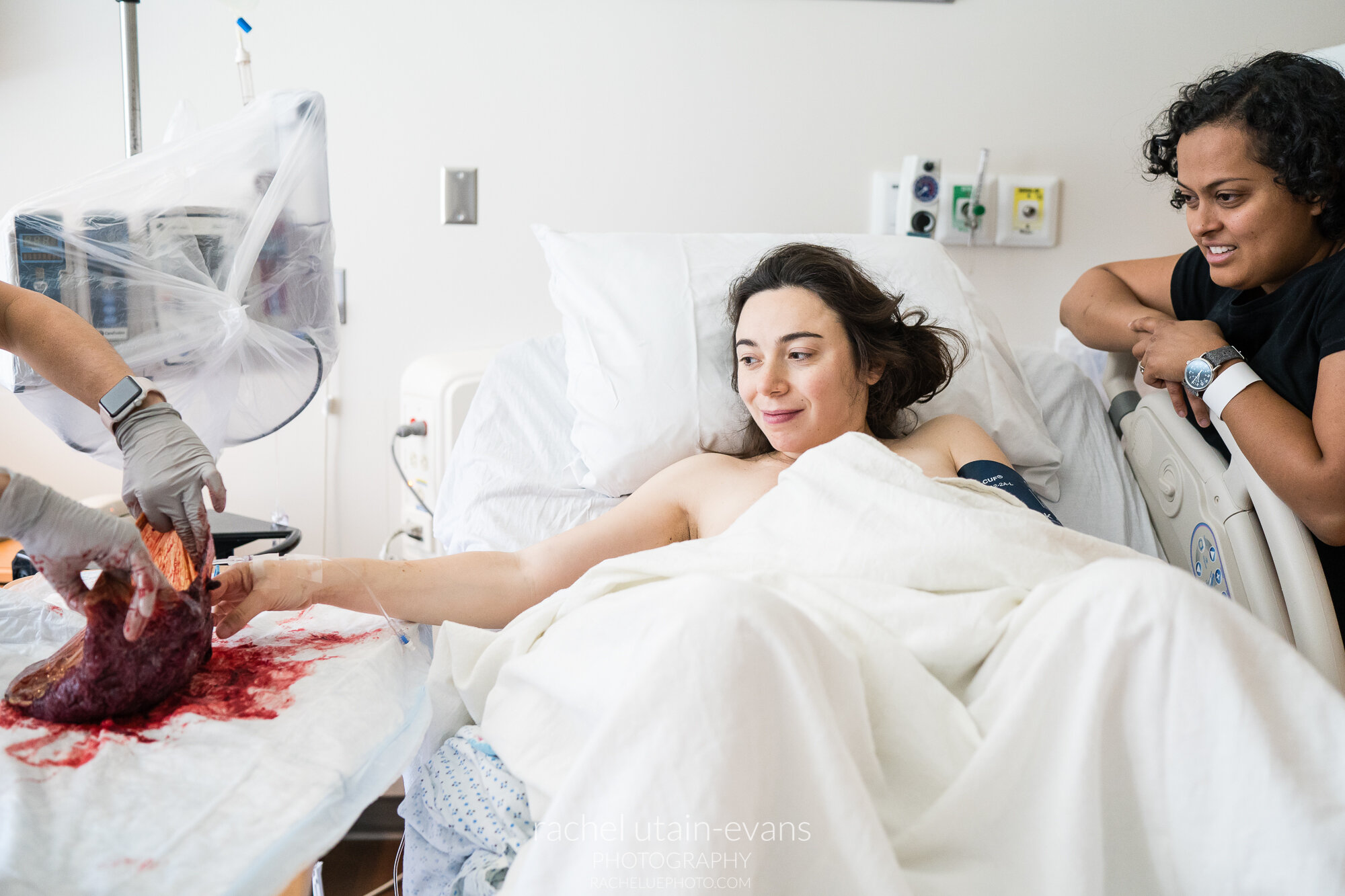
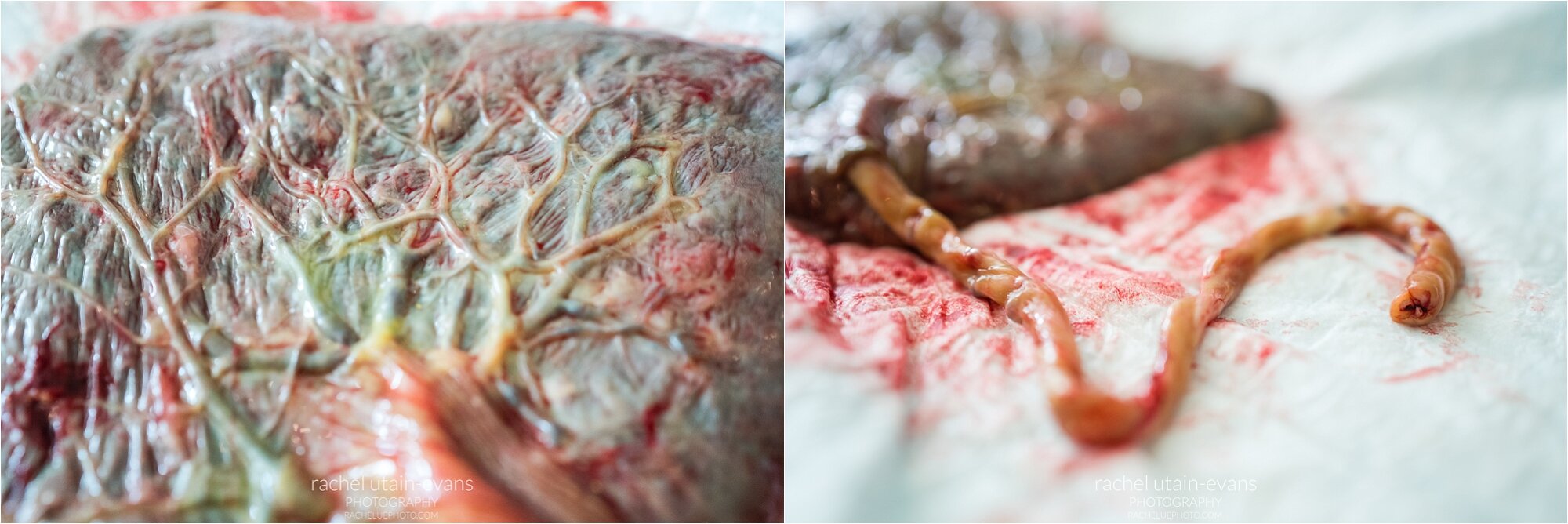
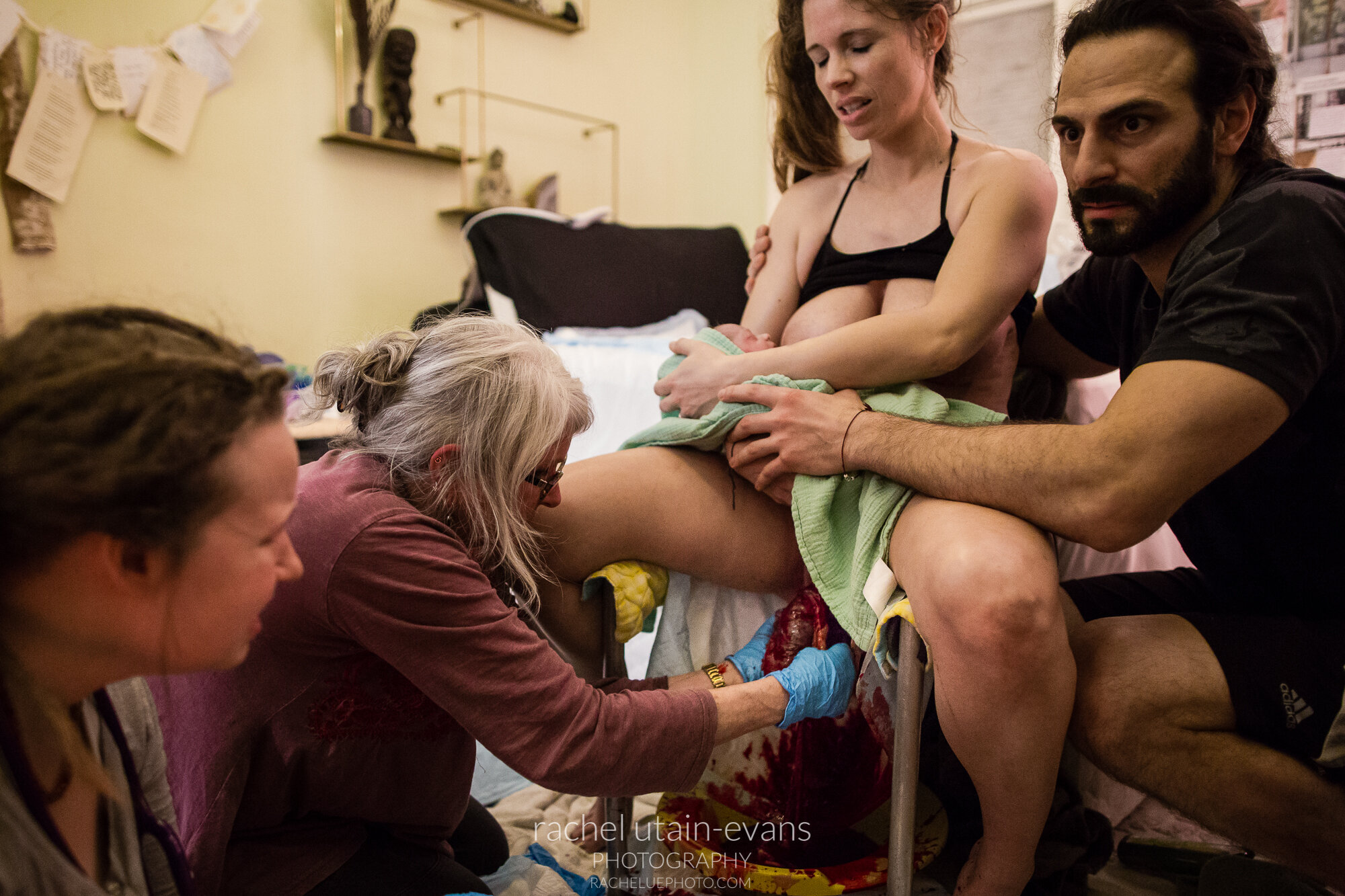
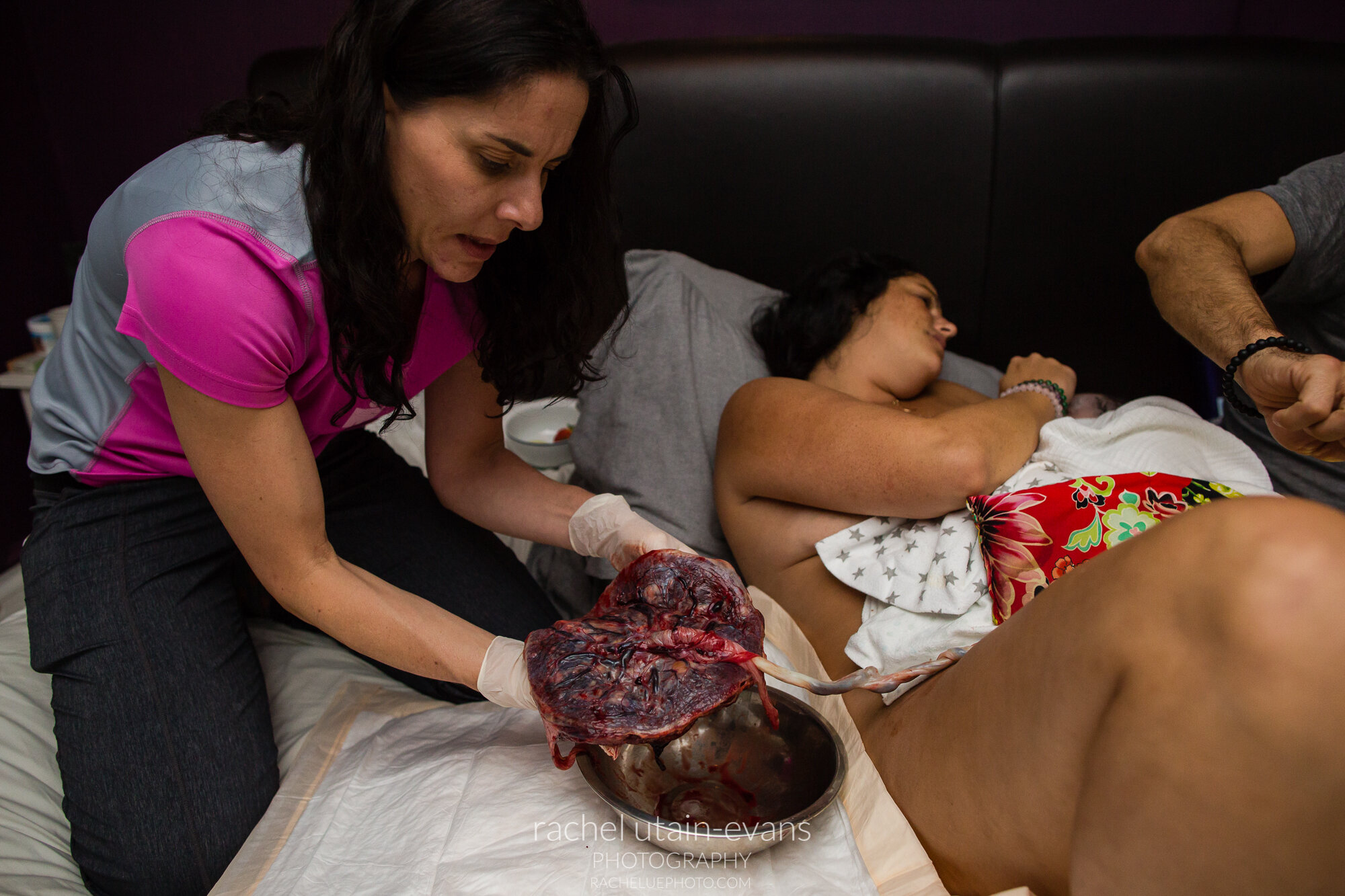
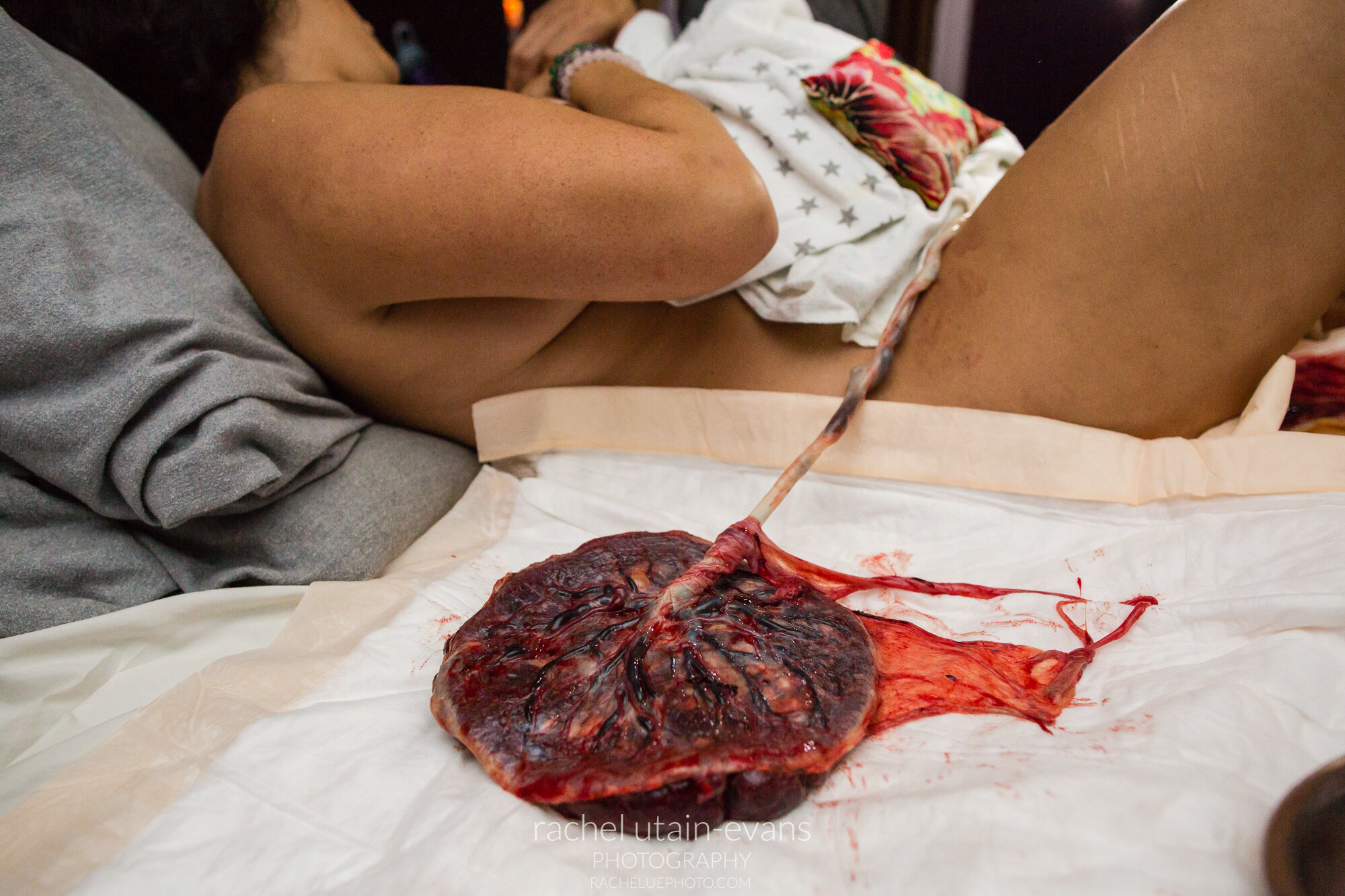
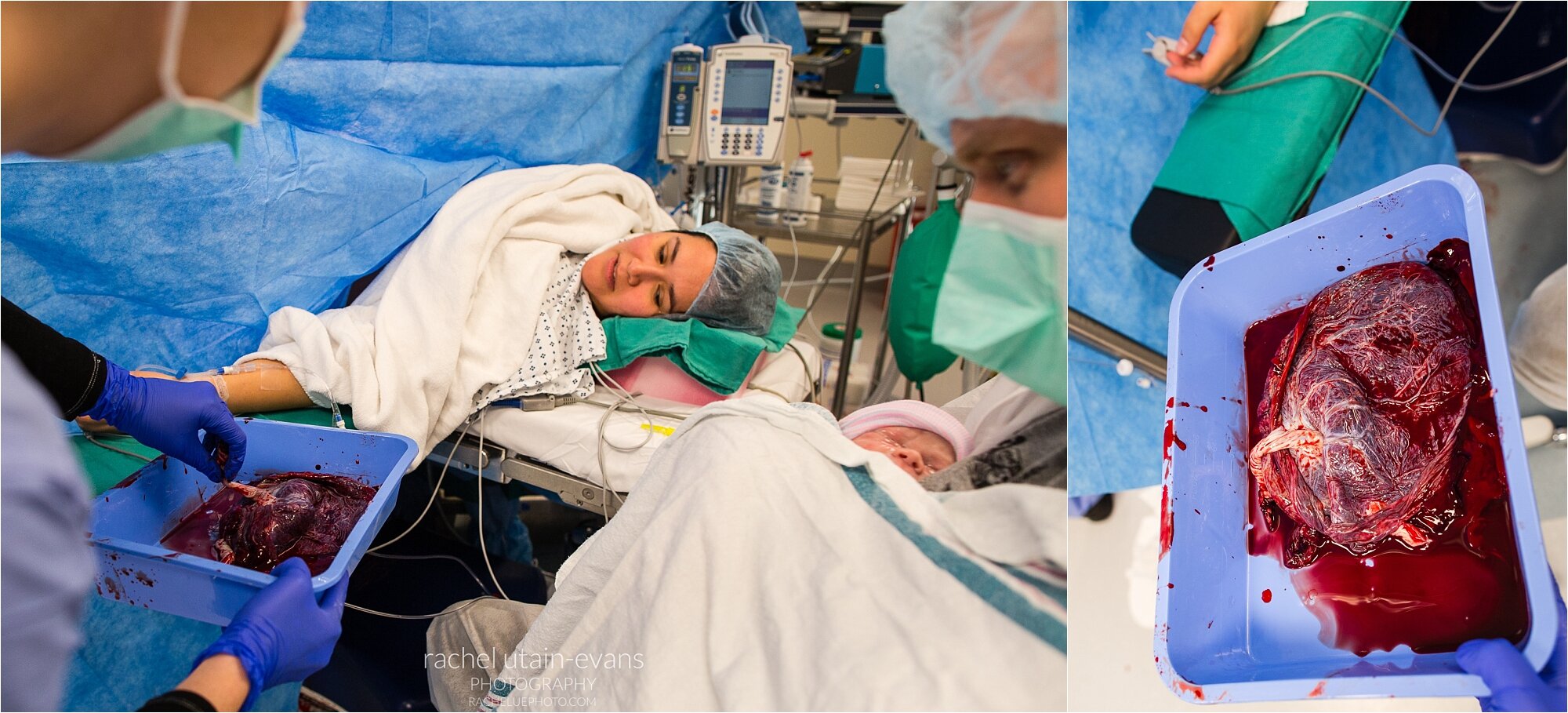
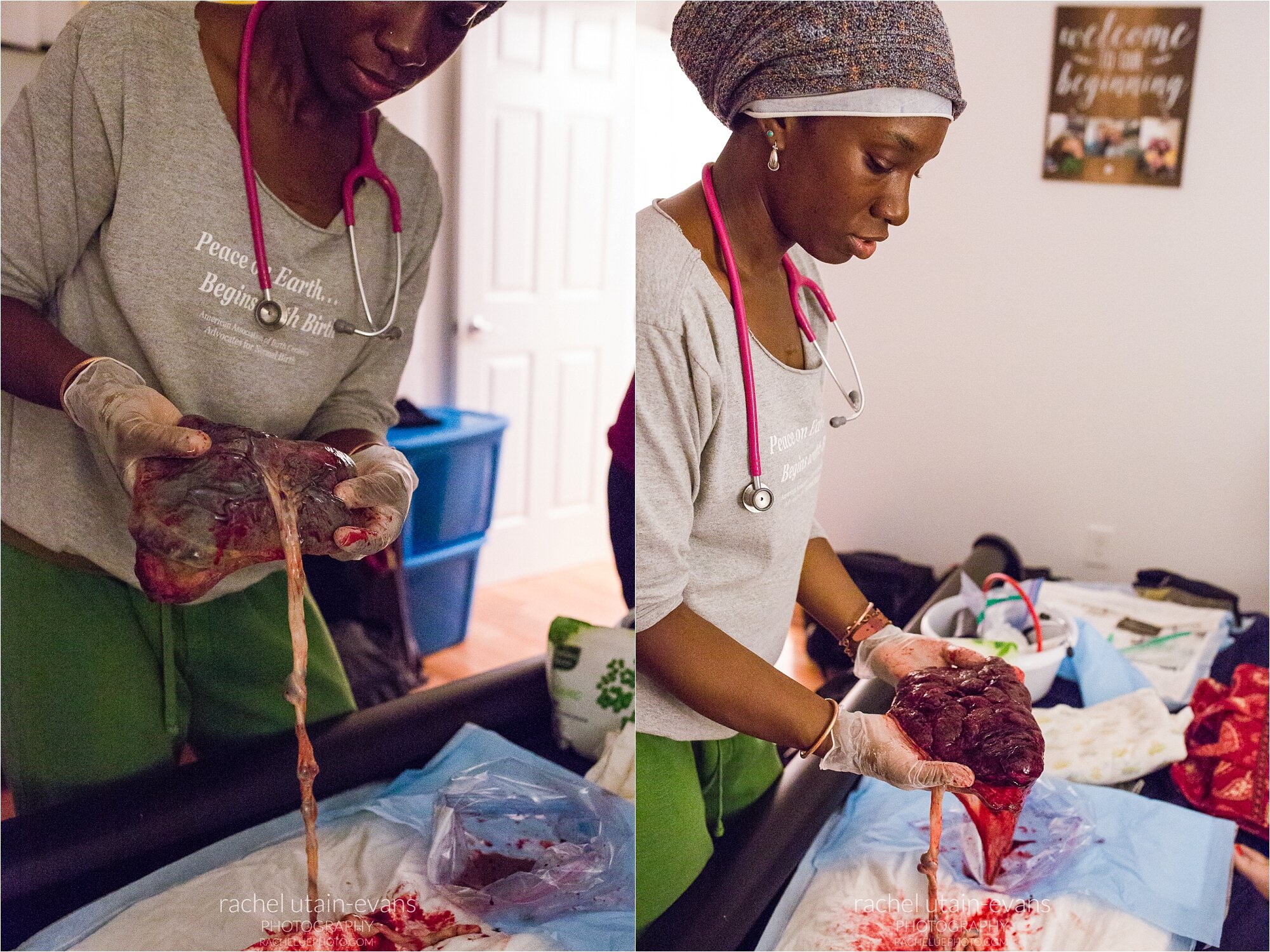
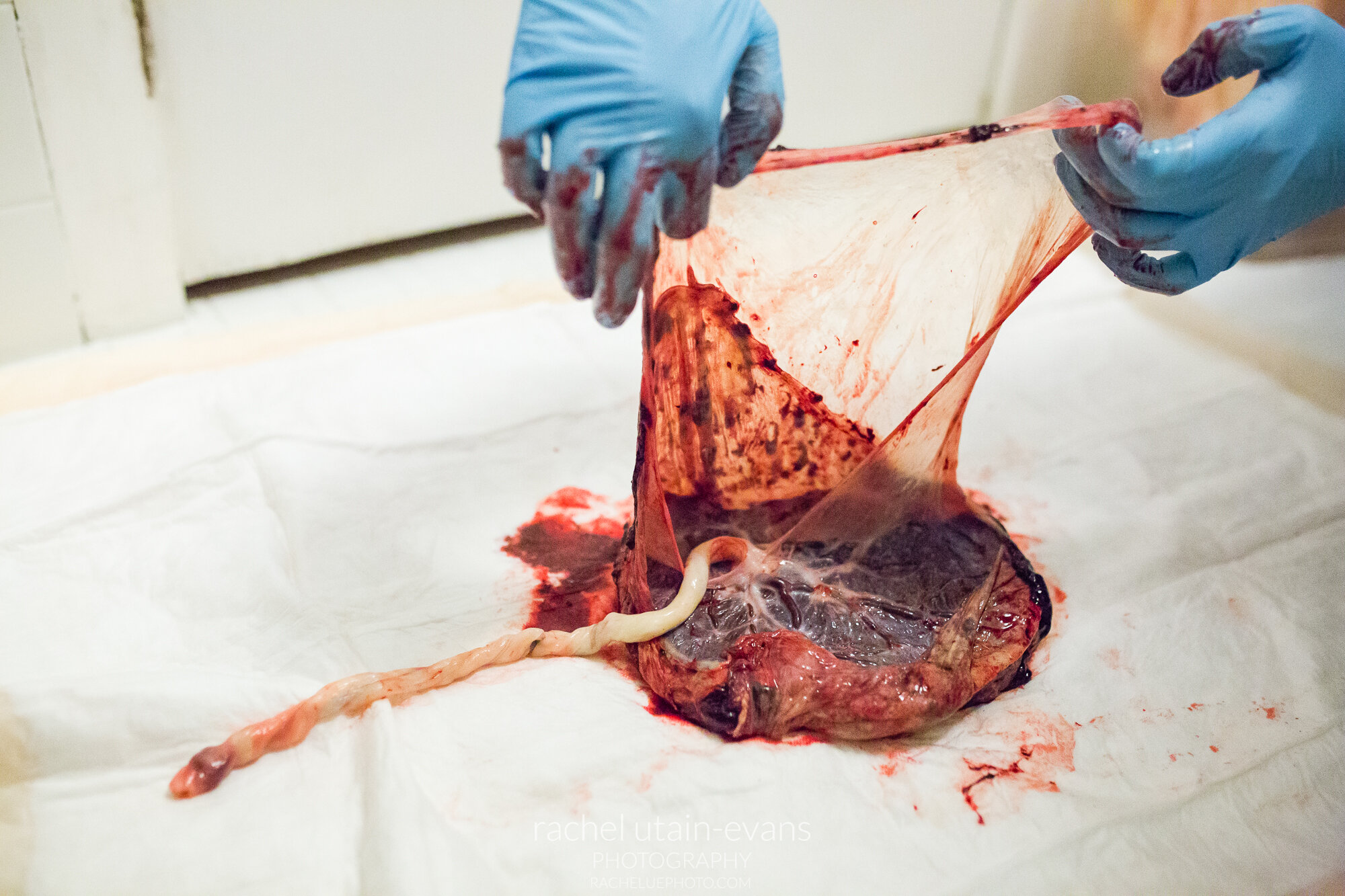
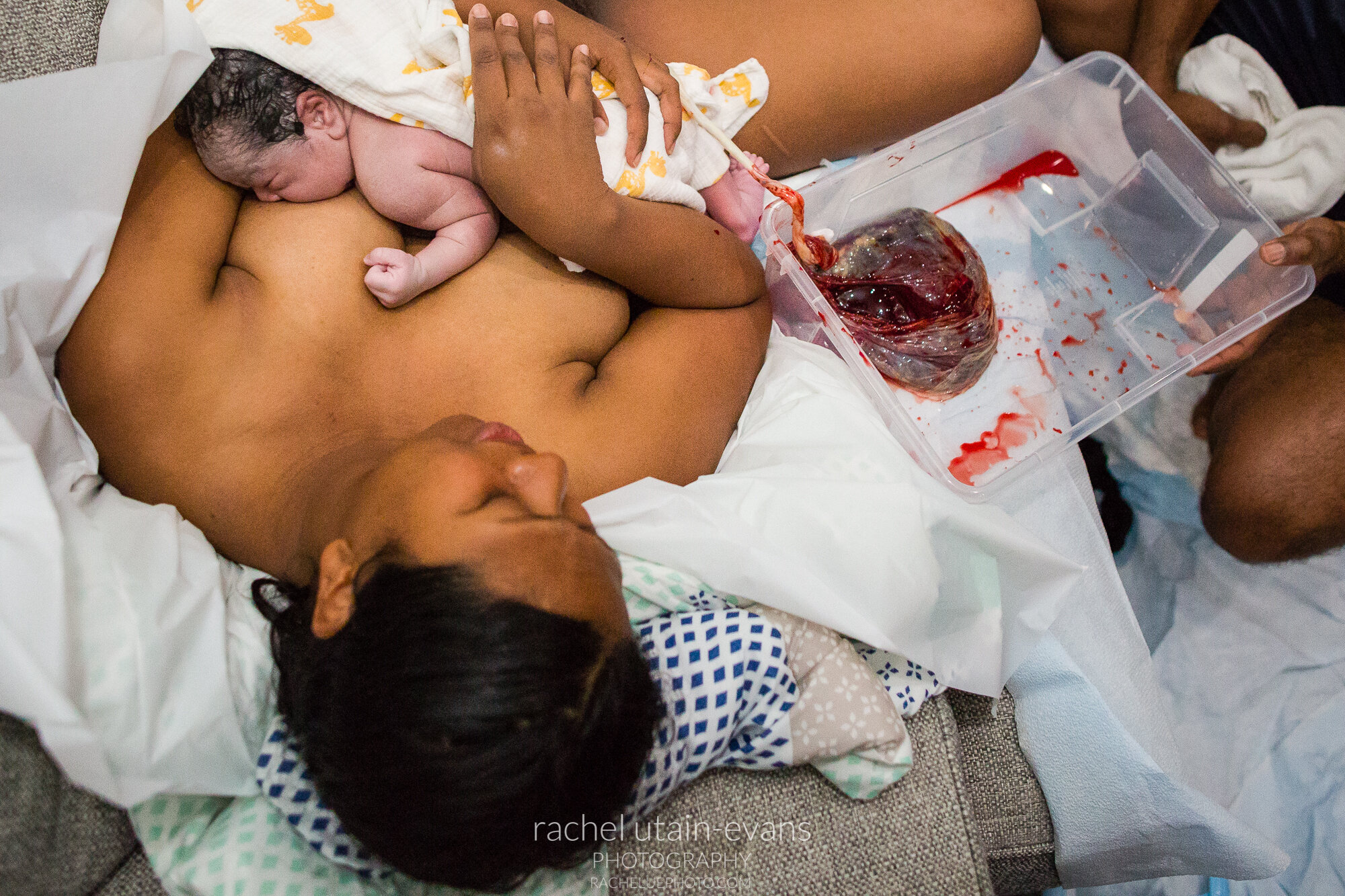
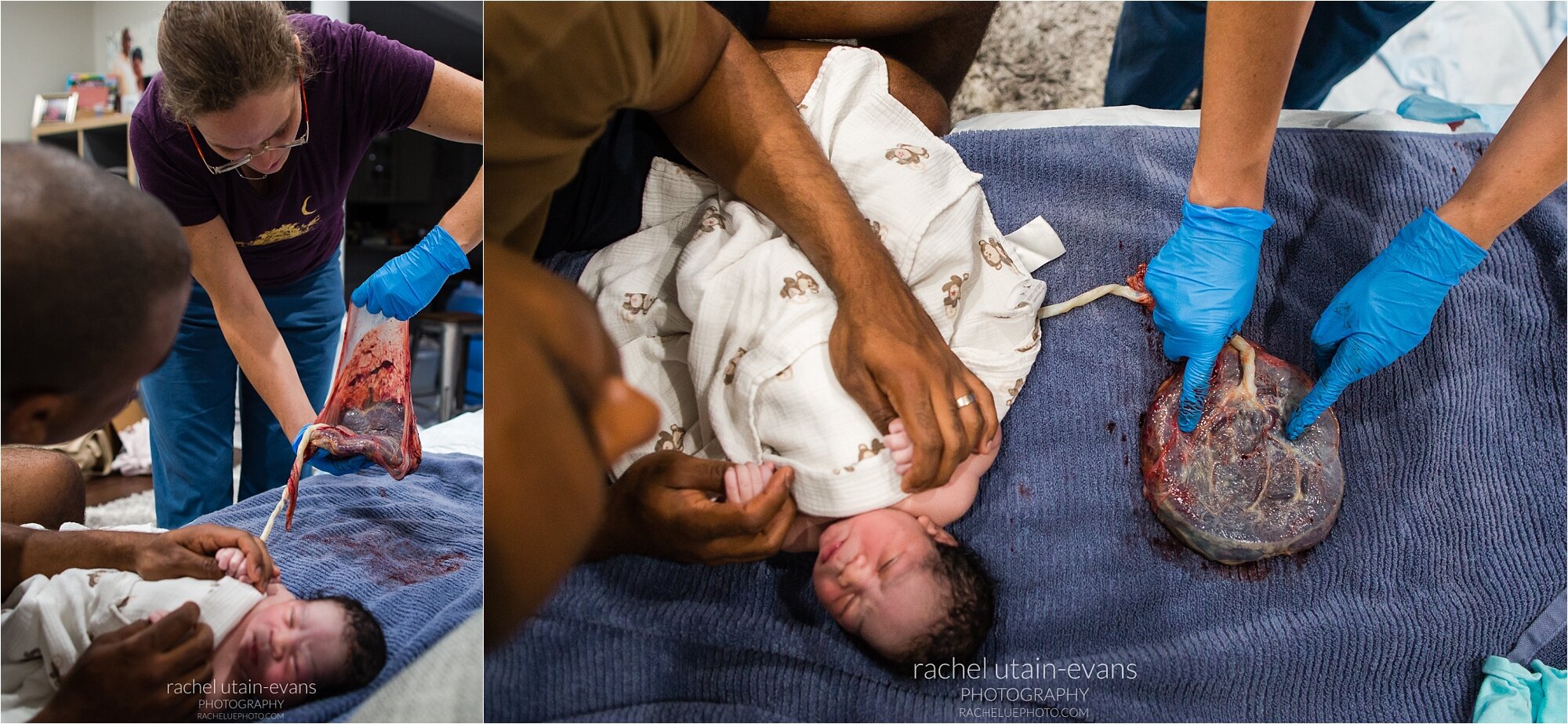
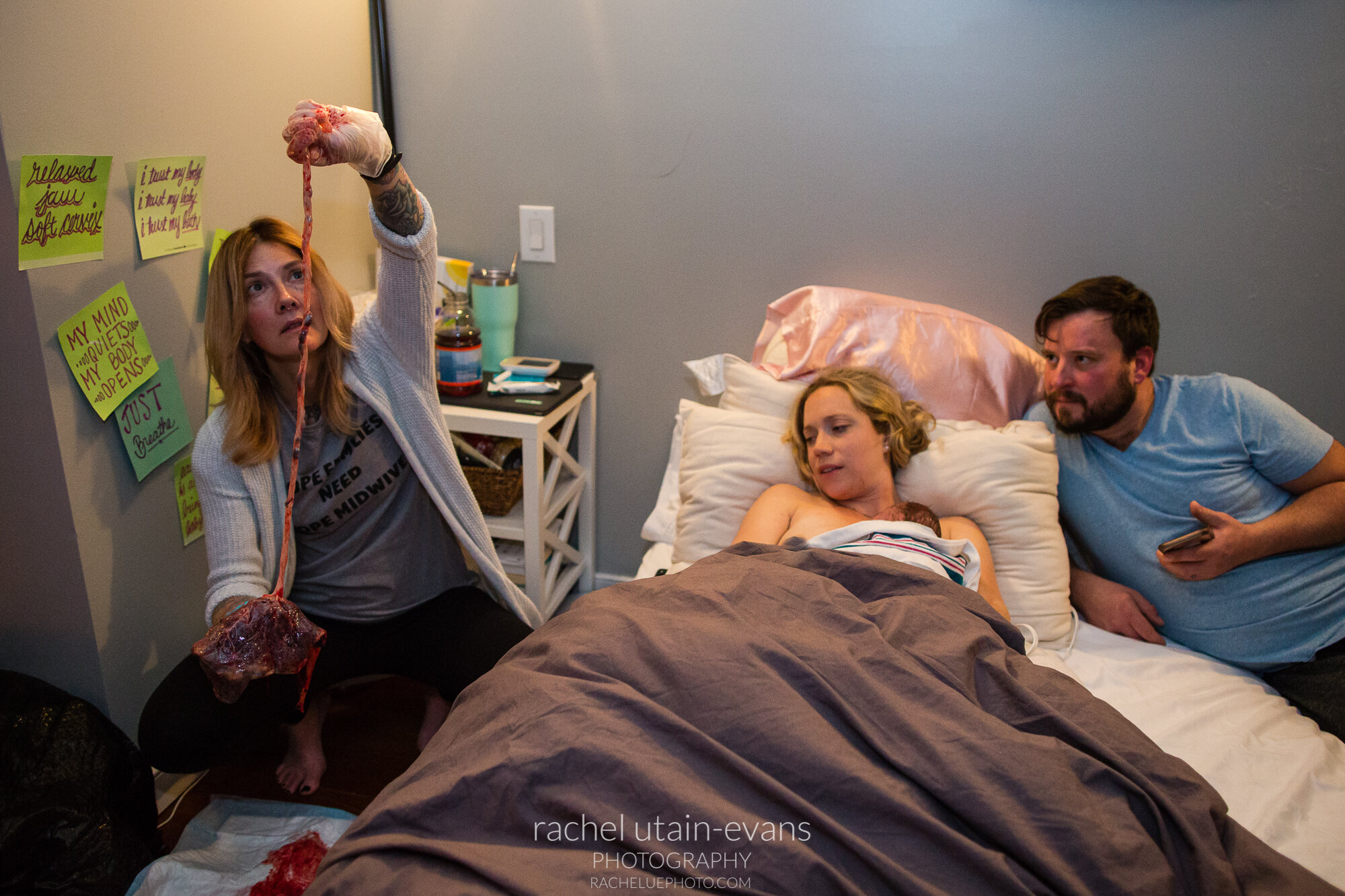
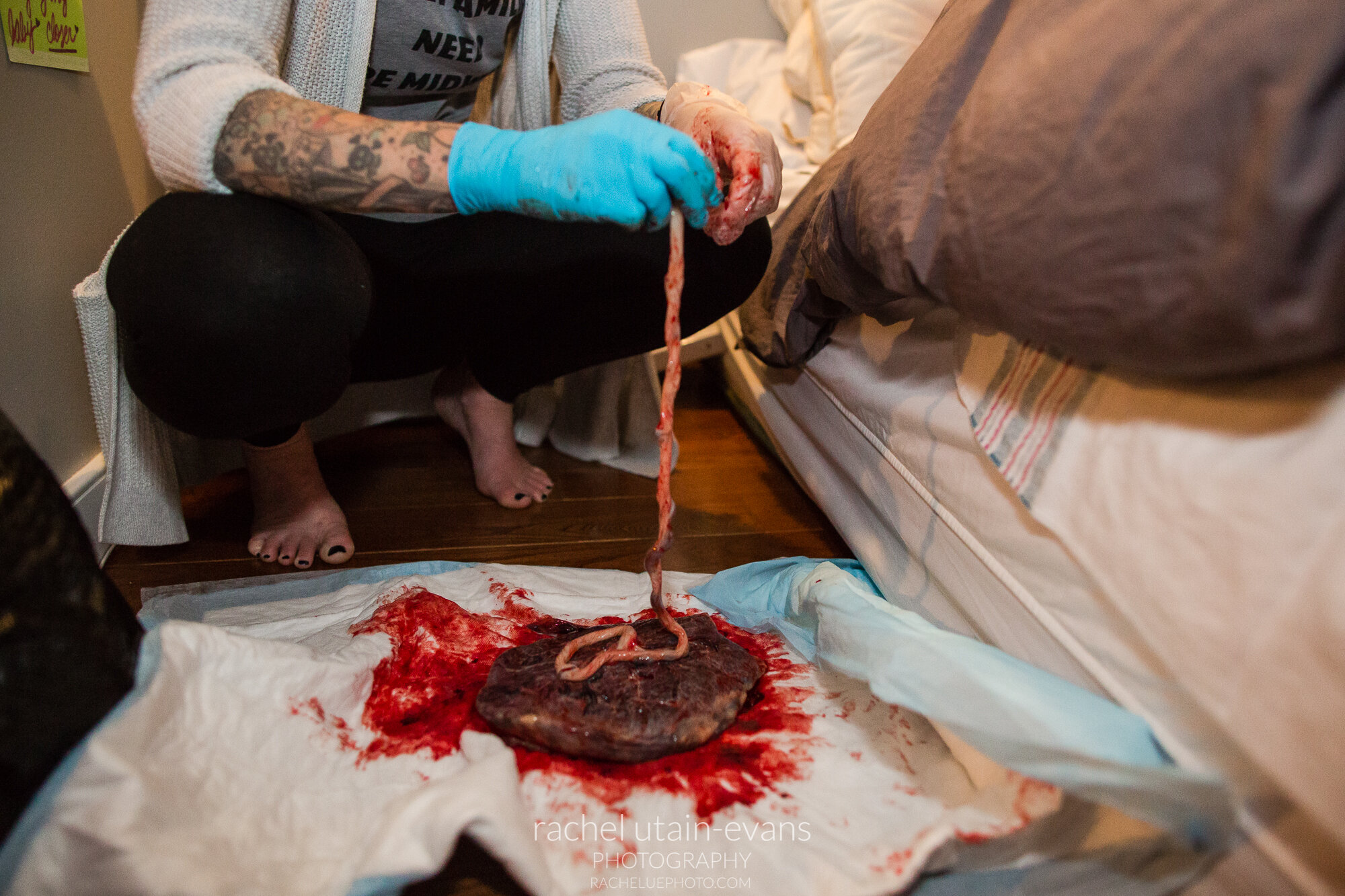

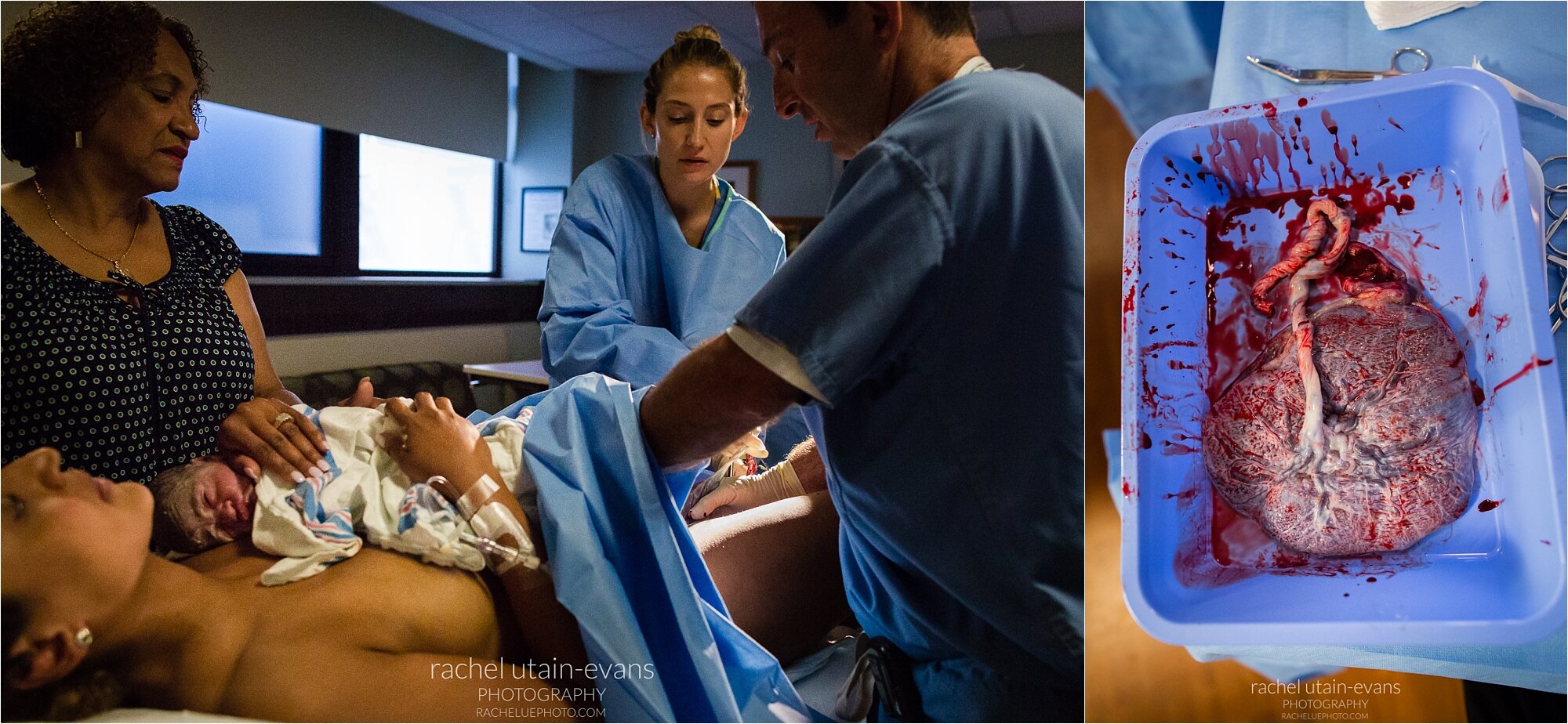
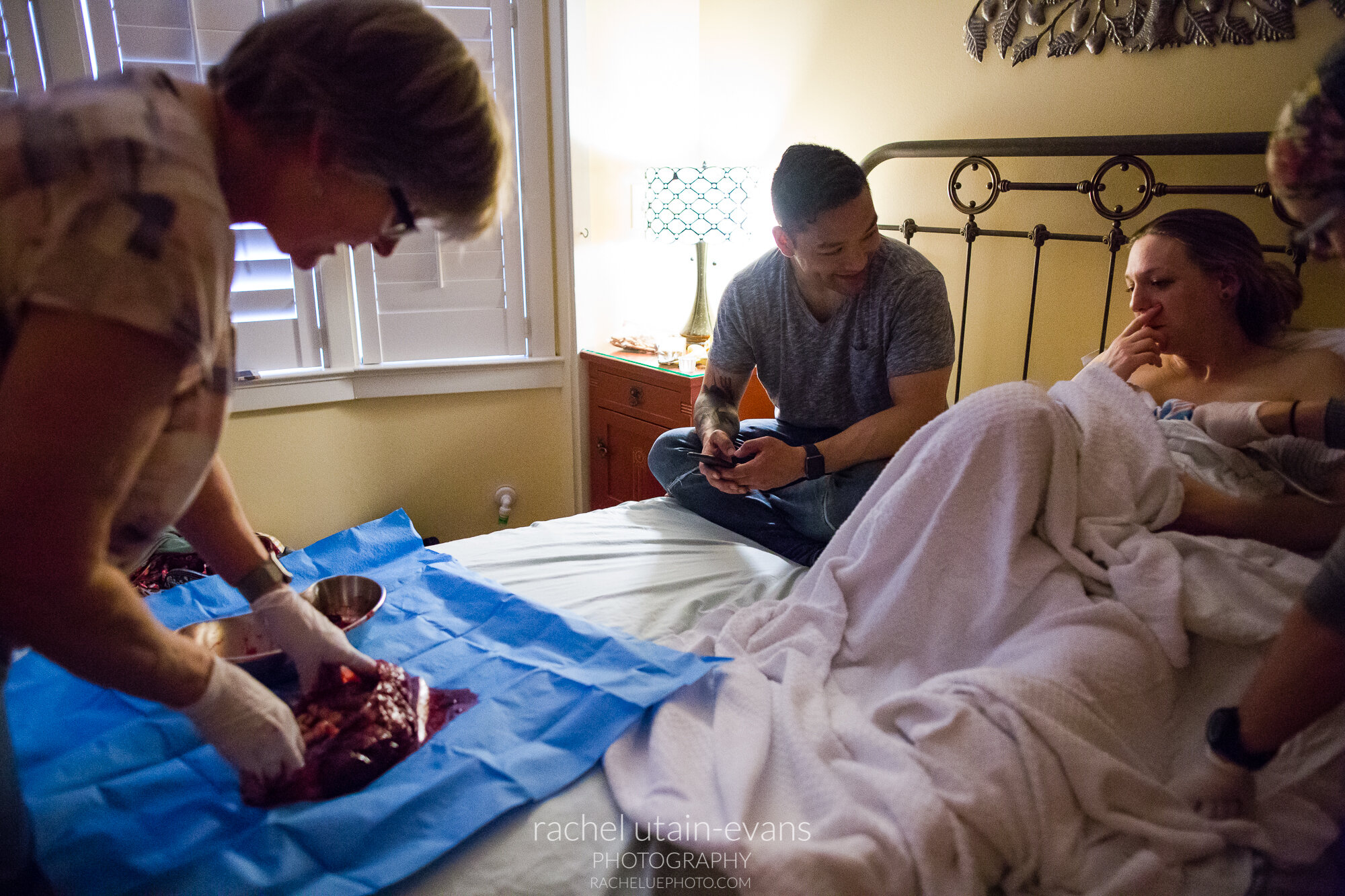
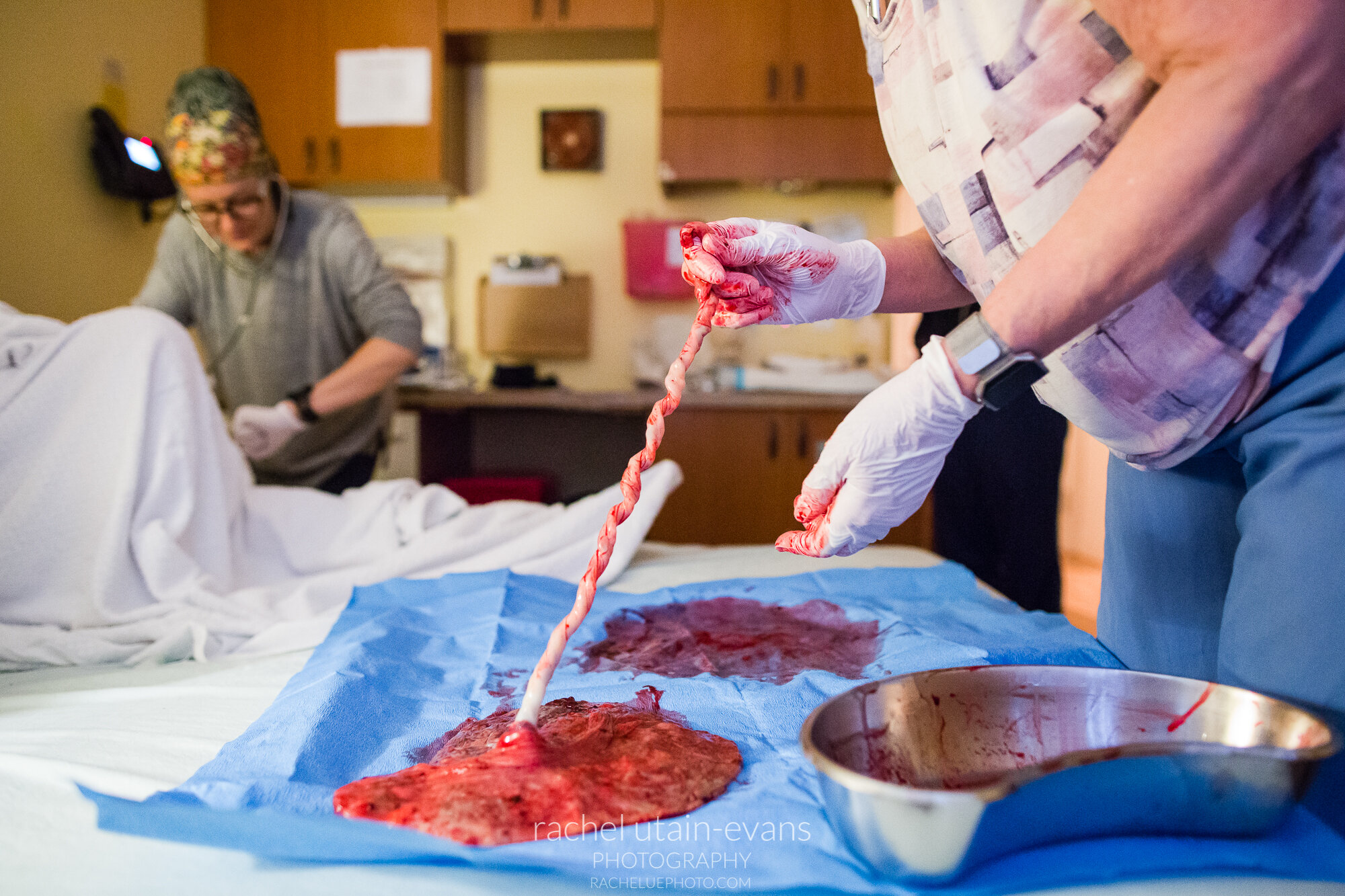
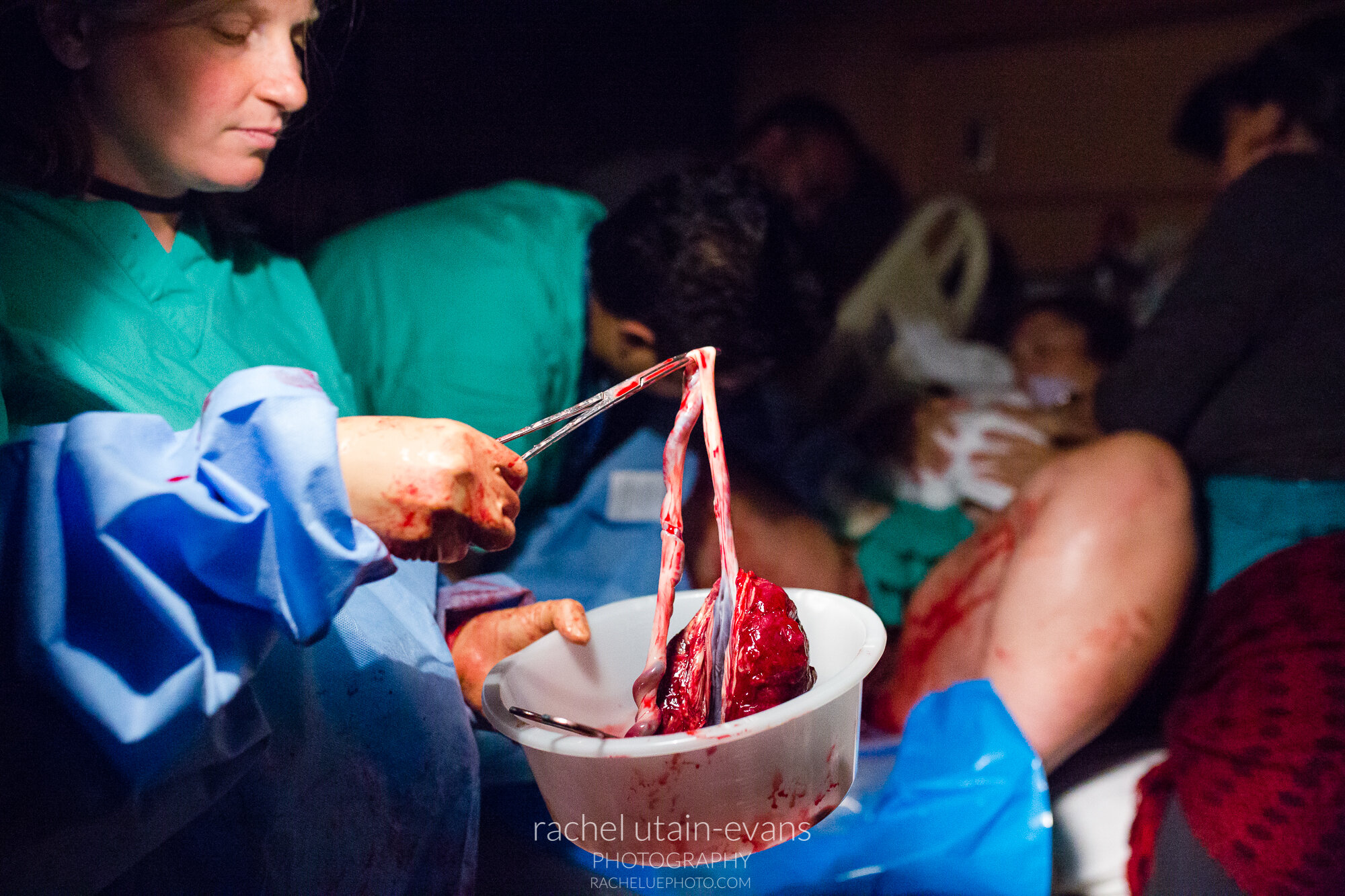
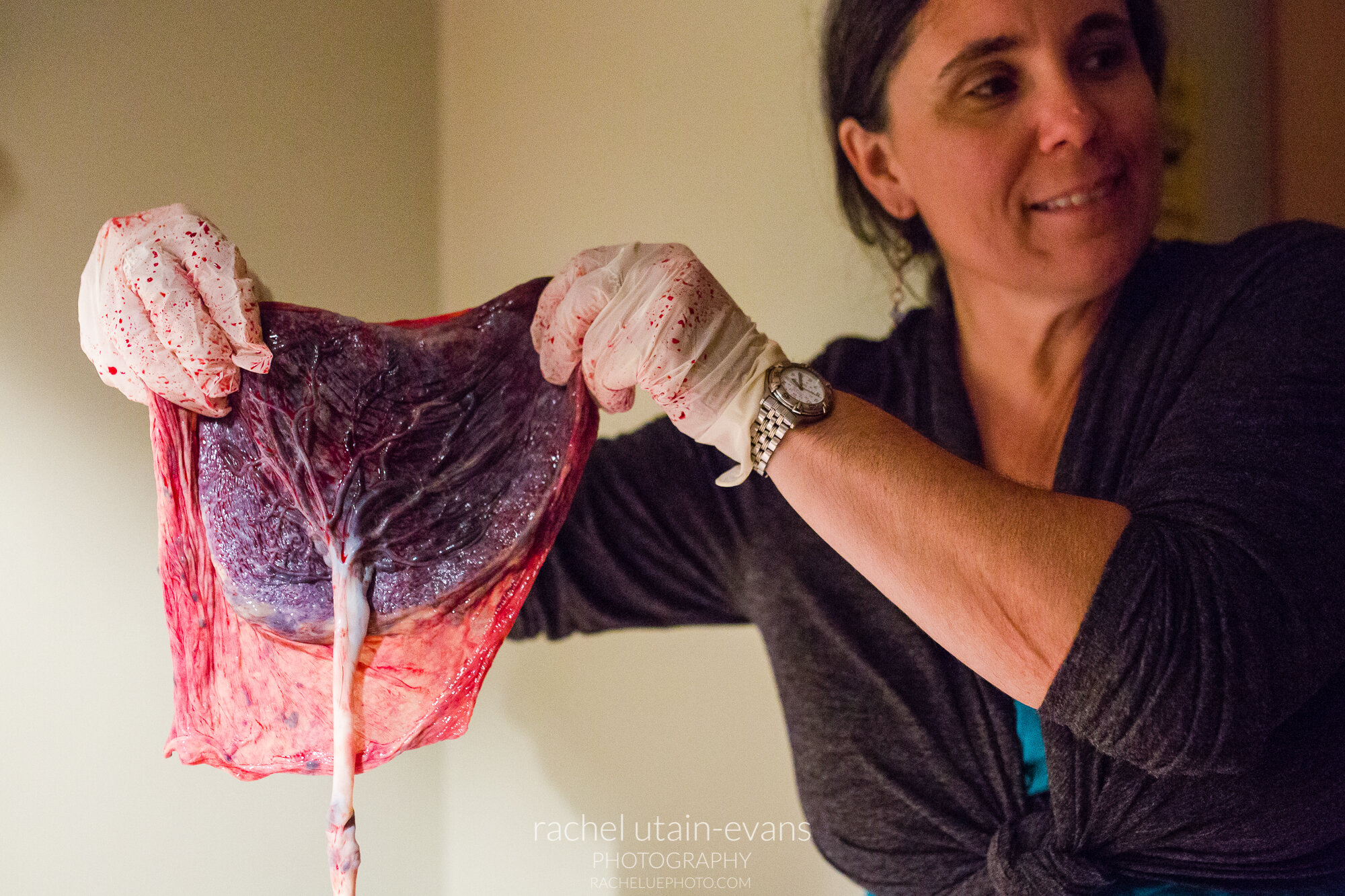
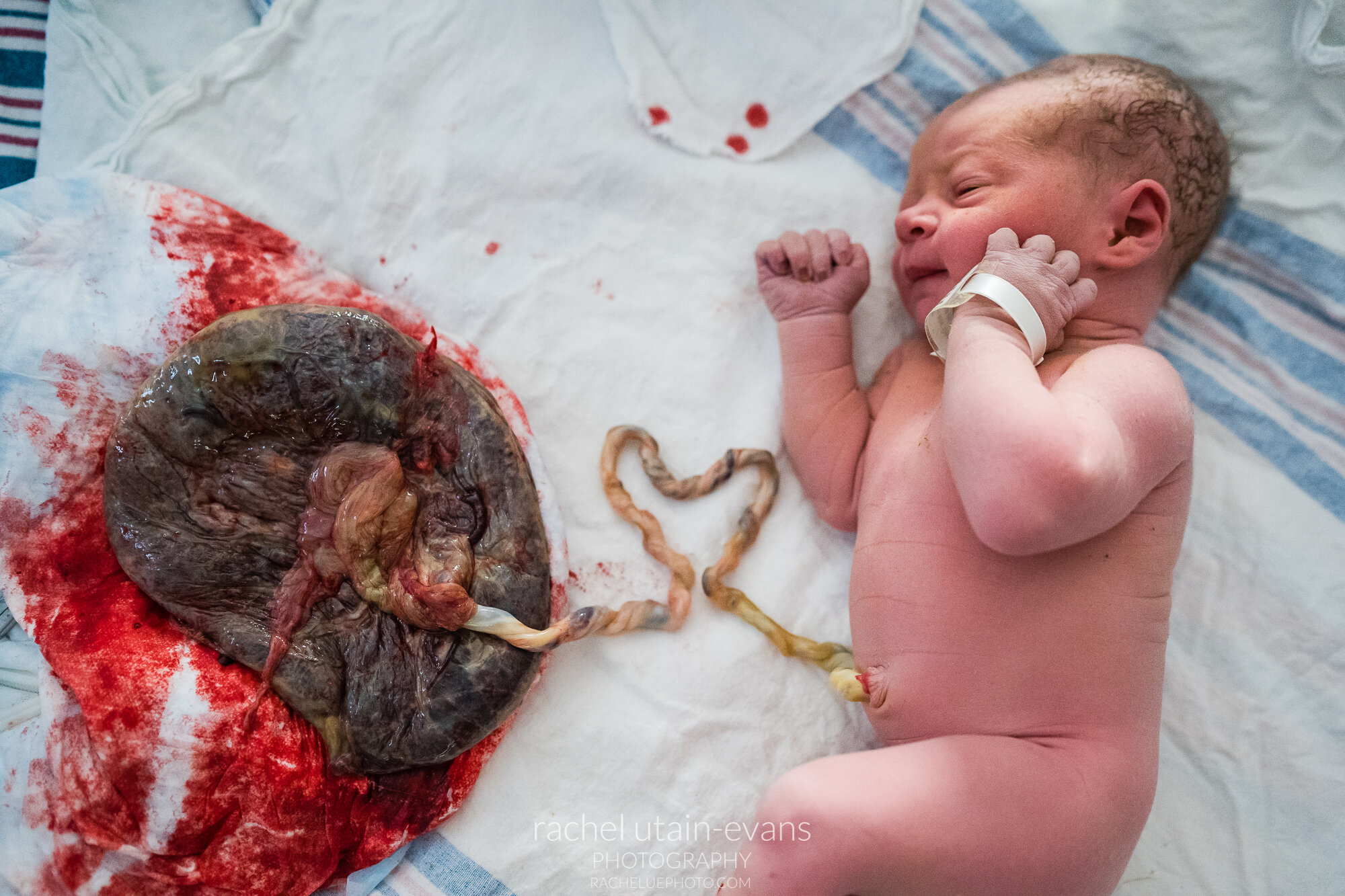
I've had so many students come to my class, freshly out of their first trimester fog, complaining that they "did nothing for three months". I love to remind them that they actually have been very busy, building an entirely new organ they didn't have before, and to give themselves some grace. We work hard to make the placenta, and then it works hard for us until we don't need it anymore. And I just find that so amazing.
Placentas are amazing.





